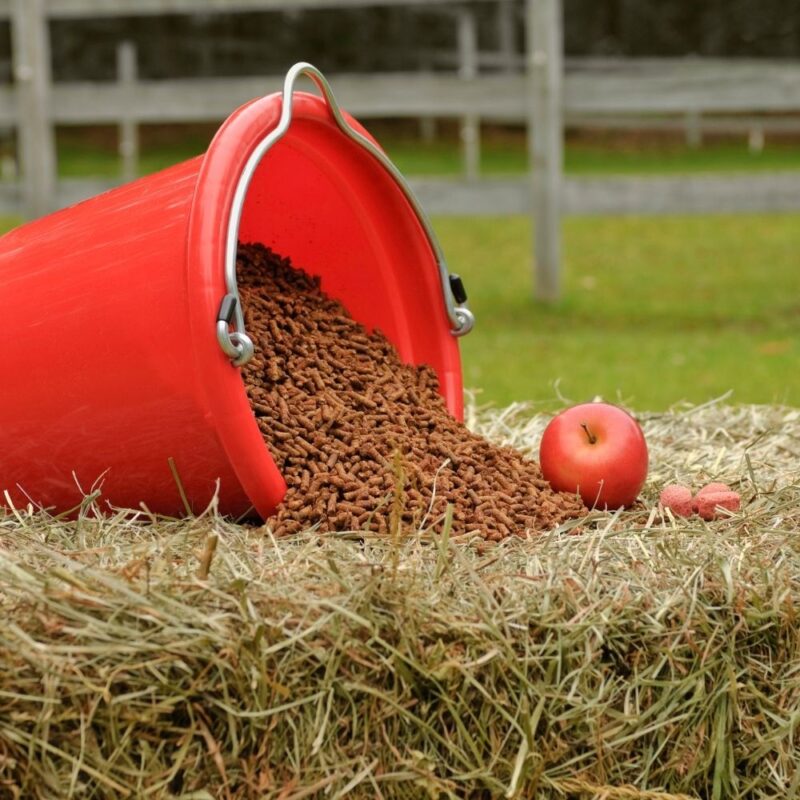
Positive reinforcement – training your horse with rewards – is growing more and more popular in the equine community. Horse owners worldwide are turning to positive reinforcement as an effective and humane way to teach and communicate with their horses. Myths about reward-based training persist, however. Misunderstandings about what positive reinforcement is, and how to use it in horse training, are still common.
Let’s break down some of the most common myths about positive reinforcement.
1. Positive reinforcement doesn’t work with horses.
This is the granddaddy of all myths about reward-based training: that it works for some animals but not for horses. Thankfully, this couldn’t be further from the truth.
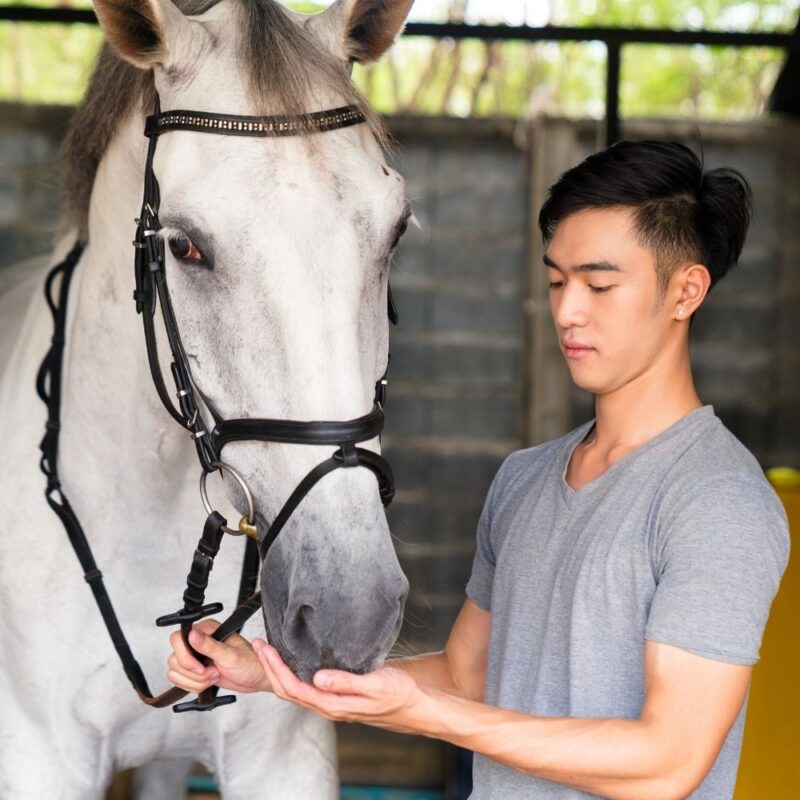
Positive reinforcement works for all animals, including horses, because it’s a natural way that animals learn. All animals including horses seek rewarding, pleasant outcomes and avoid unpleasant ones.
Positive reinforcement, often shortened to “R+,” means providing a rewarding consequence for behavior so that the animal wants to do that behavior again.
Positive reinforcement training doesn’t just work for horses – it works great. When you begin to use R+, your horse may light up and become much more willing and enthusiastic because reward-based training is such a breath of fresh air to your equine friend.
2. Positive reinforcement makes horses aggressive or pushy.
You’ve probably heard this before, or said it yourself: “Positive reinforcement makes horses aggressive!” “Training with treats will make your horse pushy or even dangerous!”
The truth is that positive reinforcement isn’t any more likely to make a horse behave aggressively or dangerously than any other type of training. And because it involves rewards and good communication, your horse is actually likely to be happier during training.
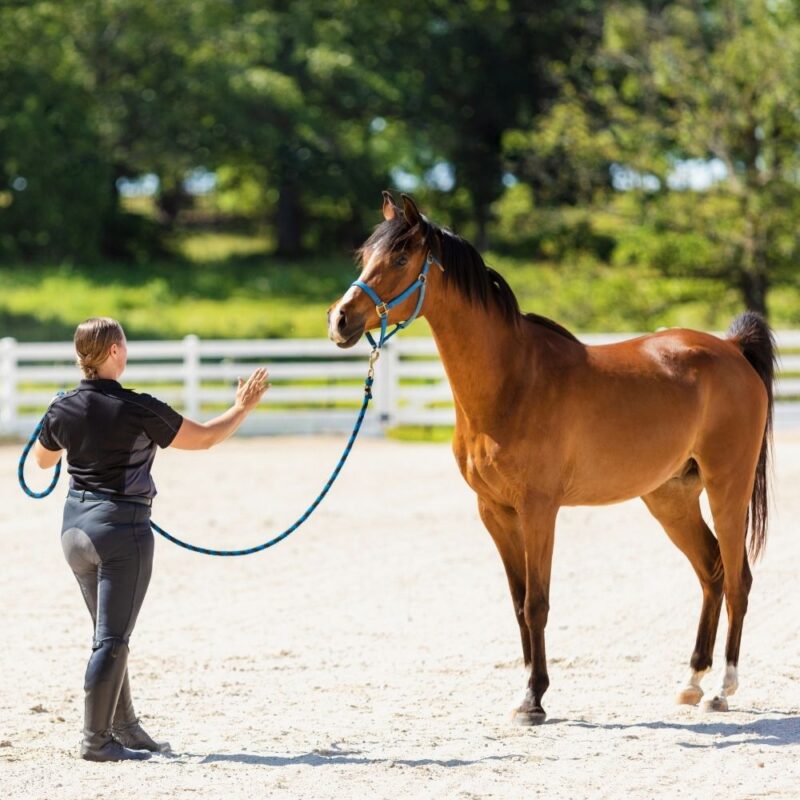
Setting up a training session properly and using rewards fairly and correctly will keep your horse happy and gentle. You may have tried training with treats in the past and stopped because your horse became muggy or even frustrated. That’s not just part of the positive reinforcement process, thankfully. Mugging or being pushy is a sign of something that needs to be corrected in the way you set up the session or use treats – and it’s fixable!
Bottom line: correct R+ training makes horses calm and happy, not aggressive and pushy.
3. Positive reinforcement is bribery.
“I don’t believe in using positive reinforcement because I don’t believe in bribing my horse for good behavior.”
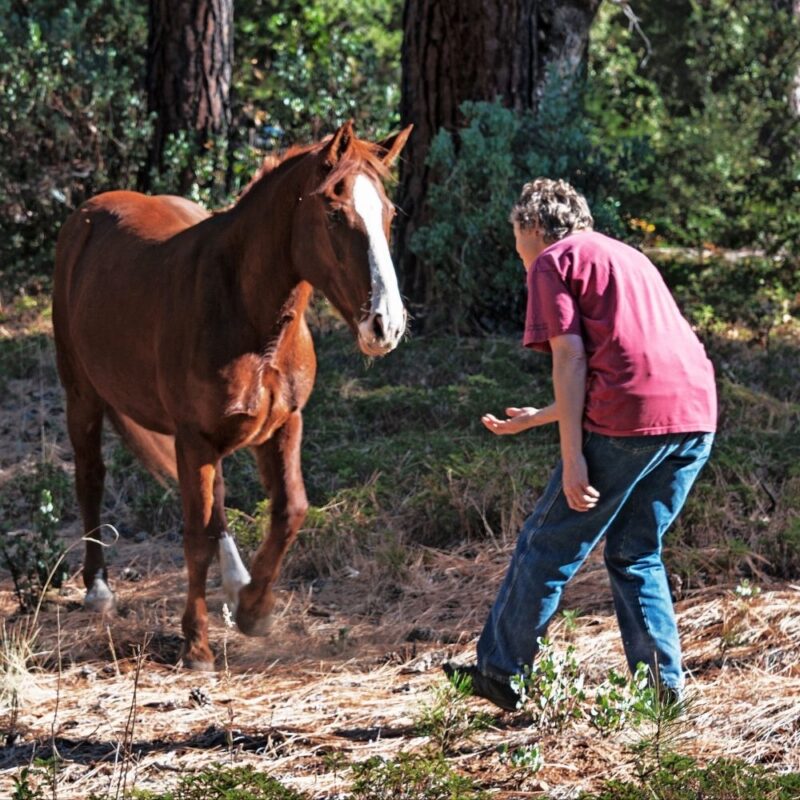
Truth? Positive reinforcement is not the same thing as bribery.
A bribe is something you give in advance to ensure they’ll do what you want. But positive reinforcement uses rewards instead, which come after the horse does something right.
Good positive reinforcement training relies on communication and timing, just like other horse training methods. Bribery isn’t positive reinforcement, and also isn’t good communication – you don’t dole out treats in advance and hope your horse participates.
Instead, you provide rewards if your horse gets a behavior right. It’s up to you to set the training up so the horse can succeed, but also to set standards for what behavior earns treats.
4. Your horse won’t respect you if you use positive reinforcement.
“Respect” has lots of meanings for people. Usually, when we describe a horse as respectful, we’re talking about a horse who keeps a bit of distance from a person, doesn’t offer unwanted behaviors, and complies with requests or demands from their trainer or handler.
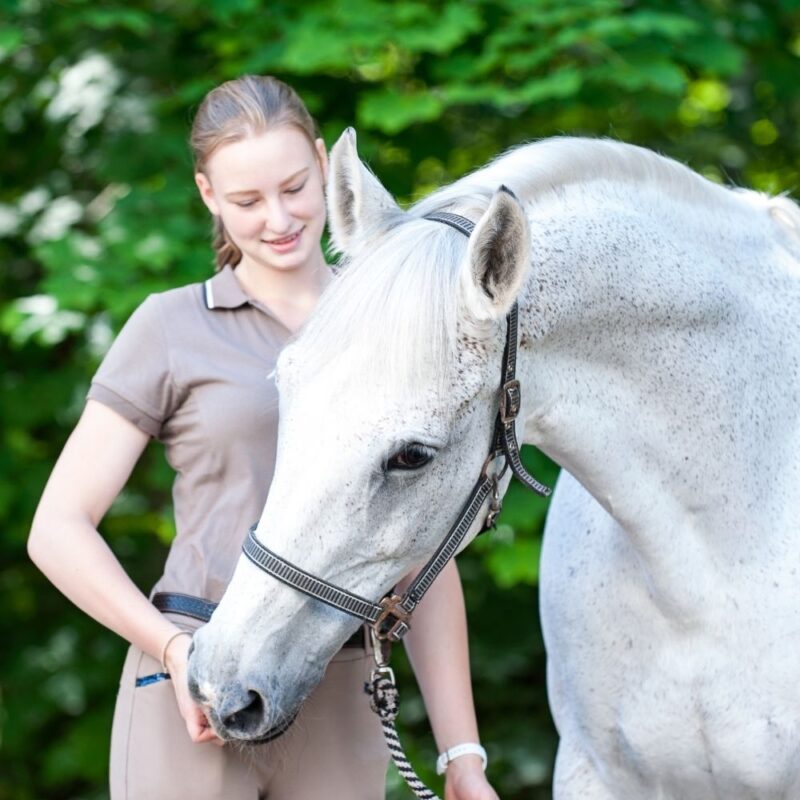
All those traits are possible with positive reinforcement. There are also some unique perks of using this learning method.
Using positive reinforcement often means you’ll need (or want) to use less punishment and pressure with your horse. After all, rewards mean they have a different motivation for behaving well! This results in a relationship that isn’t based on fear of unpleasant consequences, and often a lot more trust.
5. Your horse will only care about the food – not you.
So if it’s true that horses will work hard to please you in order to earn treats, does that mean that using R+ means your horse only cares about the food? Will they only want to hang around because you have treats?
Definitely not! Using rewards in training only adds to your relationship with your horse – it doesn’t take anything away.
Relationships are based on associations, good and bad. You mostly associate people you love or care about with good things, fun memories, or trusting experiences. Same with your horse, but with the extra power of treats added in.
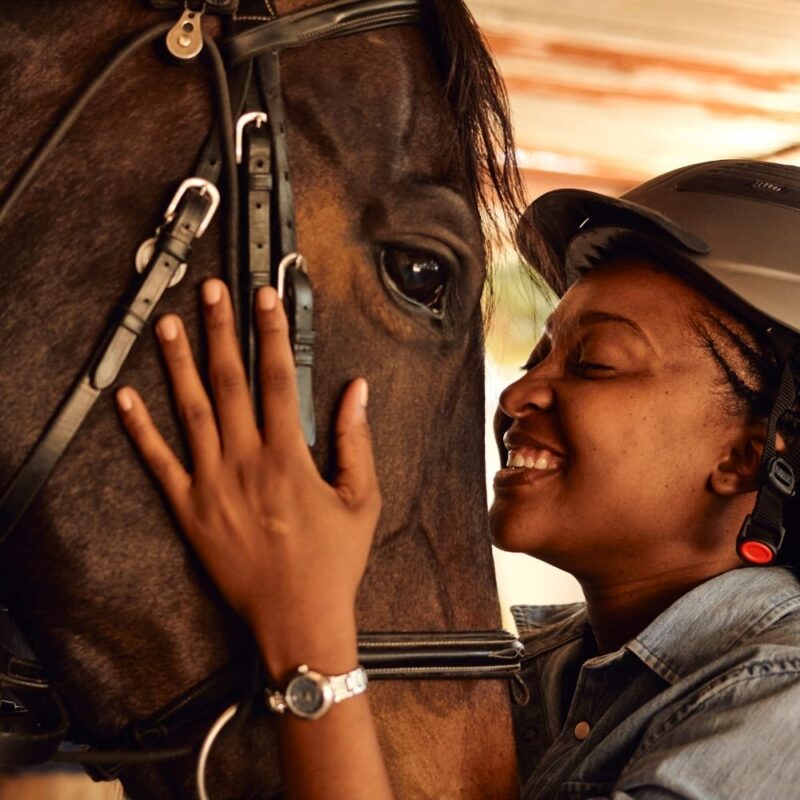
Your horse loves the treats, sure. But they also come to associate simply being around you with great experiences. They love the good feelings they get when they figure out a new behavior. They value the leadership you’ll show when helping them through scary situations in a gentle way.
And since using treats or other rewards in training usually means you need much less punishment or pressure, your horse associates you with fewer unpleasant experiences too.
It’s clear by their behavior that horses trained with R+ have strongly positive feelings about their people, and treats are only part of the picture.
6. Positive reinforcement only works for tricks.
Since you’ve read this far, you might be thinking: okay, positive reinforcement won’t turn my horse into a raging monster. And clicker training doesn’t mean my horse will only want to be around me for treats. But it doesn’t matter because positive reinforcement is only for trick behaviors, not practical horse training. Right?
Definitely a myth! In fact, positive reinforcement works to train any behavior – on the ground or even in the saddle. It especially shines when teaching your horse to participate in medical care or have good manners.
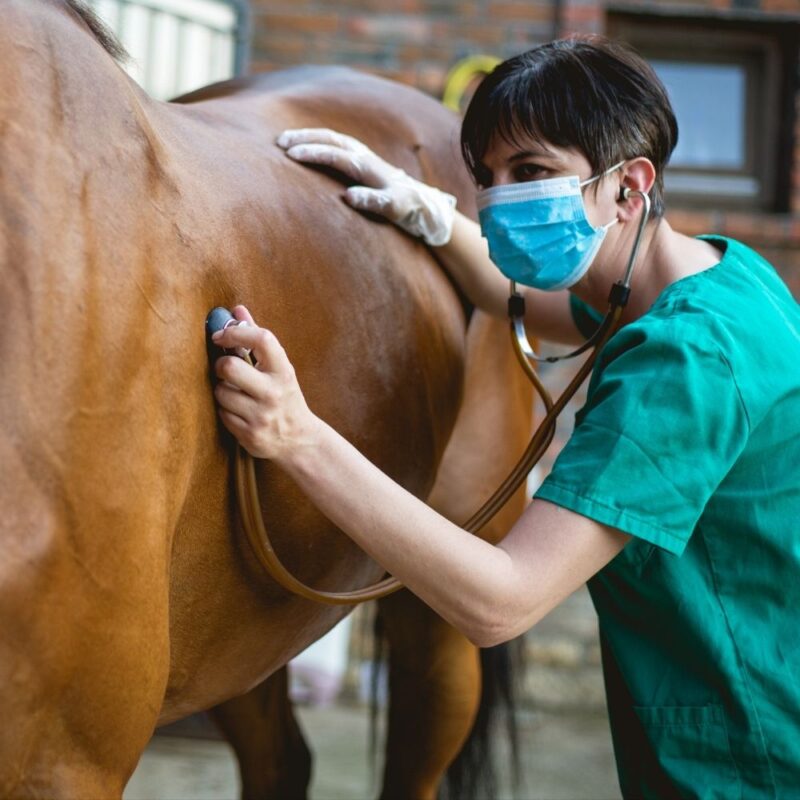
Tricks are fun and you can definitely use R+ to teach cute behaviors (working them into your training sessions is fun and refreshing for both of you). But the best part of positive reinforcement is using it to teach horses skills that were previously a struggle.
Haltering, handling feet, standing at the mounting block – these are common problem areas that are easy to fix using positive reinforcement. It’s great for empowering your horse and overcoming fear of the veterinarian. And you can absolutely reward ridden behaviors too, improving your horse’s skills and motivation undersaddle.
7. Using positive reinforcement for horses makes them spoiled.
This final myth is related to Myth #2 above – but instead of raging treat monsters, will horses trained with rewards become spoiled barn divas who walk all over their owners?
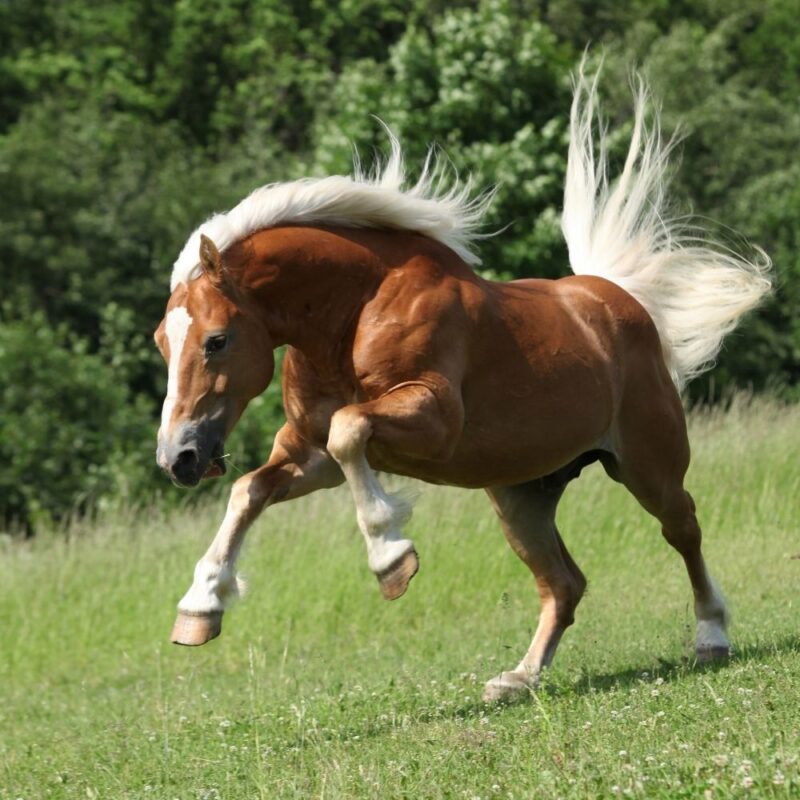
This isn’t the case. And like all training methods, the results depend on the human and how they prefer to interact with their horse.
When a horse misbehaves, doesn’t cooperate, or shows other unwanted behavior, it’s true that a positive reinforcement trainer may not use punishment. This can look strange if you use traditional methods of training, where it’s common to use “corrections,” to make the horse move their feet if they behave badly, or to “discipline” them.
Using less punishment doesn’t mean that the horse is “getting away” with bad behavior, or is walking all over their trainer. Positive reinforcement trainers use a combination of approaches to address misbehavior. Often, the best solution is to step back, give everyone a chance to breathe, and then give the horse another chance to succeed.
When you use positive reinforcement to train something scary or work on a problem behavior, you may also take things slower than a traditional trainer. On the outside, this can look like you’re not “making the horse work through it.” But what’s really happening is gradual, confidence-building learning that doesn’t rely on force and won’t break down in the future.
The R+ trainer’s approach can sometimes look more permissive than traditional training, but this isn’t the same as having a spoiled horse.
Truths about Positive Reinforcement and Horses
Those are all the most common myths you’ll hear about positive reinforcement, and if you’ve always believed them, that’s okay!
The best way to learn more is to watch a skilled R+ trainer work. And then, try it out yourself! Teach a few simple behaviors using treats and watch your horse shine.
So let’s end with a few truths about positive reinforcement.
It’s true that your horse will be enthusiastic and happy when you start using more positive reinforcement.
It’s true that you’ll have to learn the basics, just like you learned other training methods – and it’s also true that a coach or experienced trainer is the best resource during this process.
Truth: some behaviors will come instantly to your horse – how fun is that?! – and some will take more time and practice.
It’s true that you’ll eventually need, and probably want, to use a lot less discipline or punishment.
It’s also true that you’ll have a strong and respectful relationship with your horse as a result.
The world of positive reinforcement training for horses is welcoming and growing every day. If you’re ready to start using a kinder method to train your horse, you’ll find a strong community and lots of resources to help you.
Want to get started? Check out the 2022 positive reinforcement planners available here or on Amazon!